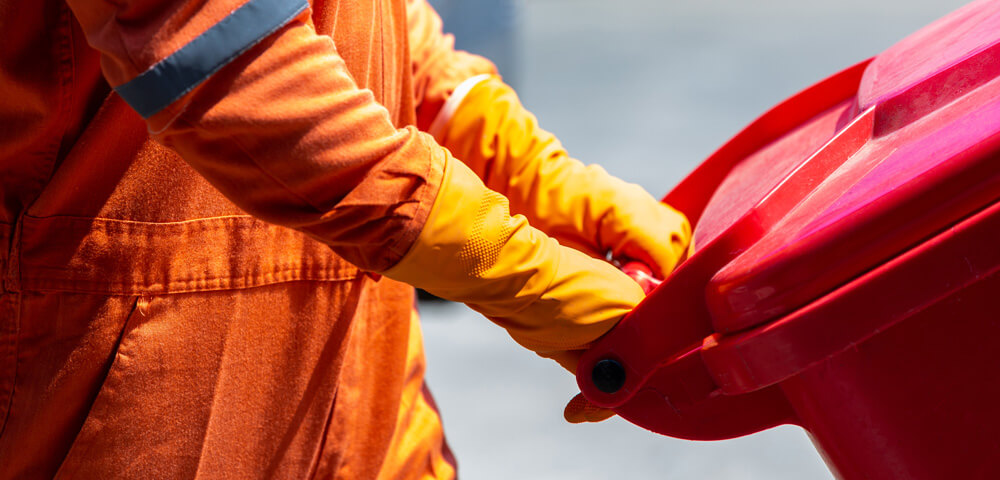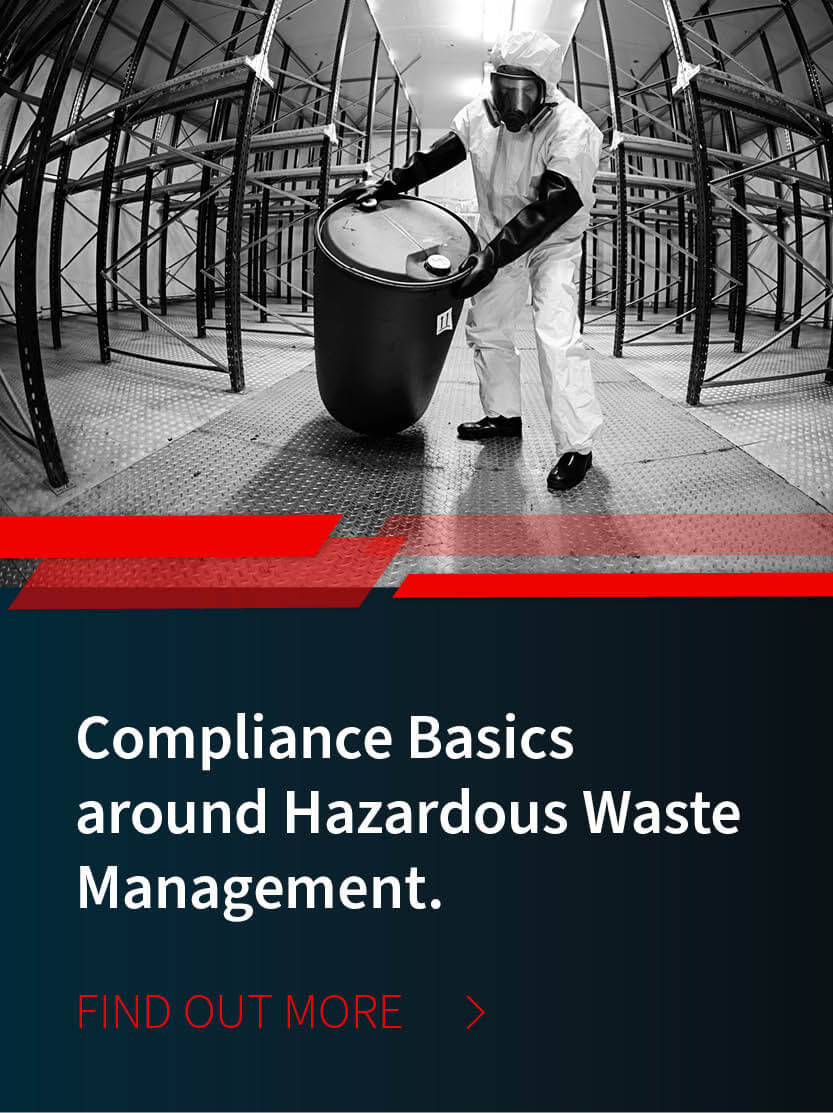
/ IN THIS BLOG
Test If your university, company or facility generates hazardous waste, you need to do test everything in your power to avoid improper hazardous waste disposal. Take steps to make sure that all waste, and especially hazardous waste is disposed of properly and safely. This process involves numerous steps, knowledge of hazardous waste laws, and attention to details. If your business or university needs to dispose of hazardous waste, know that YOU are the responsible party throughout the waste transfer process, even after it has been transported off-site for disposal.
It is your responsibility to also ensure that the disposal or waste transport company you hire to pick up and dispose of hazardous waste is properly certified. Any improper disposal of hazardous waste can result in massive fines.
Make sure you know what's expected of you as well as the people you partner with all regulations and safety requirements for hazardous waste. A number of tips can help you remain in compliance.
01 / Identify and Profile Hazardous Materials
The first important step in this process is identifying all hazardous materials that you create. Completing this step requires a bit of reading. Visit the Environmental Protection Agency’s ‘Learn the Basics of Hazardous Waste’ to get started. Remember that you must follow not only federal regulations but those of your state when it comes to hazardous waste.
If you or the people in your university, company or facility can't accurately or confidently make this decision, it is strongly recommended that you work with an experienced waste management company to help you identify what's hazardous. Again, it is the responsibility of the hazardous waste generator to know the rules.
Each hazardous item used in any facility must have an accompanying "profile." A profile consists of multiple safety data sheets (SDSs). An individual SDS reveals what chemicals are contained in an item. When multiple SDSs are put together into a profile, it reveals how those chemicals interact with each other. In this way, two separate materials might not be hazardous alone, but they become hazardous when combined, which a profile will reveal.
This identification is also important to waste transporters. Some hazardous wastes may be recycled while some cannot. In addition to the EPA’s regulations for hazardous materials, also be aware of those of the federal Department of Transportation (DOT). Your state also has a DOT agency and regulations may differ between them. The generator, the shipper or transporter, and the hazardous waste disposal facility must all comply with regulations or you will be the one responsible per the ‘cradle to grave’ approach to waste management.
02 / Use Compliant Containers to Store Hazardous Waste
After identifying hazardous waste, it’s vital to store the hazardous waste properly and safely. That means using containers that are safe and suitable for the hazardous waste produced by your business or university. To ensure compliance, use only those that are approved of by the United Nations (UN) and the DOT.
Hazardous waste is not a one-of-a-kind of material. Types of hazardous waste are determined by its characteristics: flammability, corrosivity, toxicity, and reactivity. Some hazardous materials have more than one characteristic.
All hazardous wastes are to be shipped in containers that are UN-rated. Such containers will have the symbol of a circle with the letters ‘u’ and ‘n’ inside it. The rating label also determines the compatibility of the container with the types of hazardous waste it can safely contain.
03 / Follow the Rules for Transport of Hazardous Waste
Every business or university that transports toxic or other hazardous materials must be specifically licensed and permitted to do so. The company that creates the waste should never transport that waste itself—unless the company happens to be specifically licensed and permitted in that capacity.
For the vast majority of companies, this means contracting out with a reputable hazardous waste management company to perform this service. It's the responsibility of the company or business or university that produced the waste (waste generator) to ensure it only works with companies that have a permit to legally transport hazardous waste. That company must also comply with the hazardous waste manifest system. Transportation of hazardous waste without a permit or manifest can exceed $50,000 per day, per violation.
04 / Ensure Delivery and Disposal of the Hazardous Waste
The licensed, permitted waste transportation company is required to deliver all hazardous contents to a licensed, permitted hazardous waste treatment, storage, and disposal facility (TSDF). Just as licenses and permits are required to transport hazardous materials, they are also required to store and/or dispose of it. Waste transportation companies need to ensure they are only delivering hazardous waste to permitted hazardous waste treatment and disposal facilities.
The hazardous waste transport team must provide accurate and timely documentation to show the hazardous waste generator (you) that the hazardous materials were legally transported. Documentation must include multiple universal waste manifest copies as well as land disposal restriction forms.
All these regulations and documentation have been put in place to ensure that hazardous waste materials are dealt with, stored, transported, and treated in the safest way possible. Strictly complying with these rules and regulations helps keep both the external environment and the people handling the waste safe and healthy.
For more information about the protocols related to how businesses and universities dispose of all hazardous material, contact a representative of MCF Environmental Services, a full-service biomedical waste and hazardous waste management company (with over three decades of experience) to help answer any questions you may have.
Robert Losurdo
President, COO








